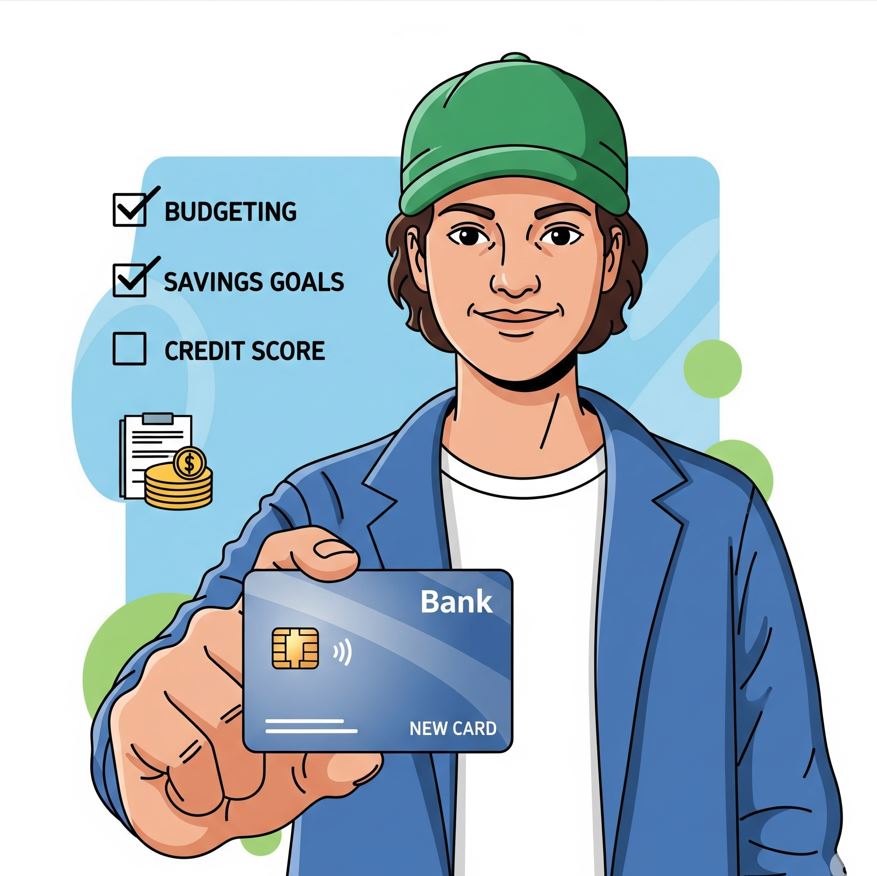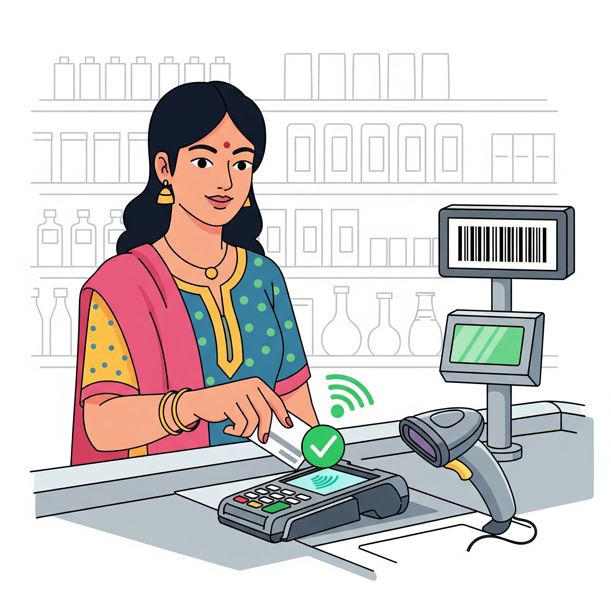How to Get Your First Credit Card in India
Getting your first credit card feels exciting and scary at the same time, right? You’ve probably heard stories – some friends talking about amazing cashback and rewards, while others warn about debt traps and high interest rates.
Here’s the truth: A credit card can be your best financial friend OR your worst enemy – it all depends on how you use it.
Think of a credit card like a powerful bike. In the right hands, it gets you places faster and more conveniently. But if you’re reckless, you can crash and hurt yourself badly.
Don’t worry though! This guide will teach you everything you need to know to get your first credit card safely and use it smartly. We’ll speak in simple language – no confusing bank terms or financial jargon that make your head spin.
Why Should You Even Get a Credit Card?
Before jumping into how to get one, let’s understand WHY you might need a credit card:
The Good Stuff
- Build Your Credit History: Like creating a financial resume that helps you get loans later
- Emergency Backup: When your salary is delayed or you have unexpected medical expenses
- Cashback & Rewards: Get money back on petrol, groceries, and online shopping
- Online Shopping Safety: Safer than using debit cards for internet purchases
- Travel Benefits: Airport lounge access, travel insurance, and hotel discounts
- EMI Options: Convert big purchases into small monthly payments
The Scary Stuff ❌ (If You’re Not Careful)
- Debt Trap: Average credit card interest rate is nearly 22% – that’s VERY expensive
- Overspending: Easy to buy things you can’t actually afford
- Late Payment Fees: ₹500-₹1,200 penalty for every missed payment
- Credit Score Damage: Can hurt your chances of getting home loans or personal loans later
Have a credit card question? Write to us anytime at info@fintechrupee.com—we’d love to help!

Step 1: Check Your Credit Score (This is SUPER Important!)
Your credit score is like your financial report card. Banks look at this number to decide:
How to Get Your First Credit Card in India
in India
- Whether to give you a credit card
- How much credit limit you get
- What interest rate you’ll pay
How to Check Your Credit Score for FREE:
- CIBIL: Visit cibil.com (one free report per year)
- Experian: Check experian.in
- Equifax: Go to equifax.co.in
- CRIF High Mark: Visit crifhighmark.com
Understanding Your Credit Score:
- 750-900: Excellent! You can get premium cards with great rewards
- 650-749: Good! Most standard cards will approve you
- 550-649: Fair – You might need to start with basic cards
- Below 550: Poor – Consider secured cards or work on improving first
Real Talk: If your score is below 650, don’t panic! Here’s how to improve it:
- Pay all your existing EMIs and bills on time
- Clear any pending credit card dues
- Don’t apply for multiple loans or cards at once
- Wait 3-6 months and check again
Pro Tip: Many people think checking your credit score hurts it. That’s FALSE! Checking your own score doesn’t affect it at all.
Step 2: Choose the RIGHT Credit Card (Don’t Pick Randomly!)
This is where most people make mistakes. They either pick the first card offered to them or choose based on ads they see on TV
For Complete Beginners (First-time users):
Secured Credit Cards
- You deposit money (₹10,000-₹50,000) as security
- Get credit limit equal to your deposit
- Easiest to get approved
- Best Options: HDFC Secured Card, SBI Secured Card
For Students & Young Professionals:
Student/Starter Cards
- Low credit limits (₹10,000-₹50,000)
- Basic rewards and cashback
- Age requirement: Minimum 21 years for most cards
- Best Options: HDFC MoneyBack, SBI Simply Save, ICICI Student Card
For People with Good Income & Credit Score:
Rewards/Cashback Cards
- Higher credit limits (₹1 lakh+)
- Better rewards and perks
- Annual fees (but benefits often cover the fees)
- Best Options: Amazon Pay ICICI, Flipkart Axis, SBI Cashback Card
Quick Decision Framework:
Ask yourself these questions:
- What’s my monthly income? (Minimum ₹15,000-₹25,000 for most cards)
- What will I use it for? (Online shopping, petrol, groceries, travel)
- Can I pay the full bill every month? (If no, avoid credit cards for now)
- Do I have any existing loans? (Too much existing debt reduces approval chances)
Step 3: Get Your Documents Ready (Make It Easy for the Bank)
Banks need to verify you’re a real person with real income. You need identity proof, address proof, and income proof. Here’s exactly what to keep ready:
Must-Have Documents:
Identity Proof (Any one):
- Aadhaar Card (most preferred)
- PAN Card (absolutely necessary)
- Passport
- Driving License
Address Proof (Any one):
- Aadhaar Card (if address is updated)
- Electricity/Gas bill (last 3 months)
- Rent agreement + utility bill
- Bank statement with address
Income Proof (Depends on your job type):
- Salaried: Last 3 months salary slips + bank statement
- Self-employed: ITR (Income Tax Return) for last 2 years
- Business Owner: Bank statements + business registration proof
Age Requirements (This is Important!):
- Minimum age is typically 18 years, though some require 21 years
- Maximum age limit is usually 60-65 years
- Most cards are for Indian citizens and residents
Special Cases:
- Students: College ID + parent’s income proof sometimes works
- Homemakers: Spouse’s income proof + joint bank account
- NRIs: Some lenders offer cards to Non-Resident Indians with special documentation
Pro Tip: Keep both physical and digital copies ready. Many banks now accept documents uploaded through their apps.
Step 4: Apply Smart – Online vs Offline (Choose Your Battle)
You have three ways to apply. Each has pros and cons:
You have three ways to apply. Each has pros and cons:
Pros:
- Fastest process – often instant approval
- Can compare multiple cards easily
- Upload documents from home
- Track application status online
Cons:
- Need good internet and smartphone skills
- Hard to ask questions if confused
Bank Branch (Best for First-Timers):
Pros:
- Face-to-face guidance
- Can ask questions and get instant answers
- Bank staff helps with documentation
- Feel more secure and trusted
Cons:
- Takes more time
- Need to visit during banking hours
- Sometimes longer waiting times
Step 5: What Happens After You Apply (The Waiting Game)
Here’s the typical timeline so you know what to expect:
Day 1: Application Submitted
- Bank sends acknowledgment SMS/email
- Gets a reference number (SAVE THIS!)
Day 2-3: Document Verification
- Bank calls to verify your details
- Sometimes asks for additional documents
- Be Ready: Answer calls from unknown numbers during this period
Day 3-7: Credit Check & Assessment
- Bank checks your credit score
- Verifies your income with your employer (sometimes)
- Decides your eligibility and credit limit
Decision Time:
If Approved
- If Approved Get approval SMS/email with credit limit
- Physical card dispatched within 7-10 days
- Pin sent separately for security
If Rejected
- Bank must tell you the reason
- Common reasons: Low credit score, insufficient income, too many recent applications
- You can reapply after fixing the issue (wait at least 6 months)

Step 6: Your Card Arrives – Now What? (The Most Important Part!)
Congratulations! 🎉 You got your first credit card. But this is where the real game begins.
Immediate Steps (Do This on Day 1):
- Activate Your Card: Call the number on the sticker or use mobile app
- Set Your PIN: Choose something secure but memorable
- Download Bank’s Mobile App: For easy bill payments and tracking
- Set Up Auto-Pay: Pay at least minimum amount automatically
- Note Important Dates
Smart Usage Rules (Follow These to Avoid Trouble):
The 30% Rule: Never use more than 30% of your credit limit
- If limit is ₹50,000, don’t spend more than ₹15,000
- This keeps your credit score health
The Full Payment Rule: Avoid paying just the minimum amount – this leads to debt trap
- If you spent ₹10,000, pay ₹10,000 – not just ₹500 minimum
The Emergency Only Rule: Don’t use credit card for lifestyle inflation
Use it for planned purchases, not impulse buying

Common Mistakes That Can RUIN Your Financial Life (Avoid These!)
Mistake 1: The “Free Money” Mindset
What People Think: “I have ₹50,000 limit, so I can spend ₹50,000” Reality: It’s borrowed money with 22-36% annual interest! Solution: Treat it like your debit card – only spend what you have
Mistake 2: Paying Only Minimum Amount
Example: You spend ₹20,000, pay only ₹1,000 minimum Cost: ₹19,000 × 3% monthly interest = ₹570 EXTRA every month! Solution: Always pay full amount or don’t use the card
Mistake 3: Missing Payment Dates 💀
Cost: Late payment fees (₹500-₹1,200) + interest charges + credit score damage Solution: Set phone reminders or auto-pay
Mistake 4: Applying for Multiple Cards
This can hurt your credit score and reduce approval chances Solution: Stick to one card for first 1-2 years
Mistake 5: Not Reading Credit Card Statements
Risk: Fraudulent transactions, hidden charges, errors go unnoticed Solution: Check every transaction monthly like you check your WhatsApp
Mistake 6: Cash Withdrawals
Cost: 2.5-3.5% fees + 36-42% annual interest from day 1 Solution: Never use credit card for cash – use debit card instead
Pro Tips for Credit Card Success (From People Who’ve Done It Right)
Start Small, Think Big:
- Begin with ₹5,000-₹10,000 monthly usage
- Pay on time for 6-12 months
- Request credit limit increase
- Upgrade to better cards with rewards
Track Everything:
- Use apps like Money Manager or bank’s own app
- Set spending alerts at 20% and 30% of limit
- Review statements monthly like a detective
Build Credit History:
- Use card regularly but responsibly
- Keep credit utilization below 30%
- Pay bills 2-3 days before due date
- Check credit score every 6 months
Maximize Benefits:
- Learn about your card’s reward categories
- Use cashback for categories you spend on anyway (groceries, petrol)
- Take advantage of discounts and offers
- But NEVER spend extra just for rewards
What If You’re Rejected? (Don’t Give Up!)
Rejection is not the end of the world. Here’s your comeback strategy:
Find Out Why You Were Rejected:
- Low credit score (most common)
- Insufficient income
- Too much existing debt
- Incorrect or incomplete documents
- Too many recent credit applications
Your 6-Month Recovery Plan:
Month 1-2: Fix documentation issues, pay off small debts Month 3-4: Ensure all EMIs and bills are paid on time Month 5-6: Check credit score improvement, then reapply
Alternative Options While You Wait:
- Secured Credit Card: Put ₹10,000 deposit, get ₹10,000 limit
- Add-on Card: Ask family member to add you to their card
- Prepaid Card: Looks like credit card but uses your own money
Building Your Credit Journey (The Long Game)
Getting your first credit card is just the beginning. Here’s your growth path:
Year 1: Learn the Basics
- Focus on paying bills on time
- Keep usage under 30%
- Don’t overspend
- Build good habits
Year 2: Optimize and Grow
- Request credit limit increase
- Start earning and using rewards
- Consider a second card (different category benefits)
- Monitor credit score improvements
Year 3+: Advanced Strategies
- Premium cards with better rewards
- Travel benefits and lounge access
- Building wealth through cashback investments
- Helping others learn responsible credit usage
Red Flags: When NOT to Get a Credit Card
Be honest with yourself. Don’t get a credit card if:
- You’re already struggling with existing debts
- You have spending control issues
- Your income is irregular or uncertain
- You’re getting it just to impress others
- You don’t understand how interest and fees work
Remember: There’s no shame in waiting until you’re financially ready.
Your Action Plan (What to Do Today)
This Week:
- Check your credit score for free
- Research 2-3 credit cards that match your profile
- Gather all required documents
- Calculate your monthly budget and decide spending limit
Next Week:
- Apply for the most suitable card
- Set up phone reminders for follow-up
- Download banking apps you’ll need
- Create a simple tracking system for expenses
After Getting Your Card:
- Activate and set PIN immediately
- Make a small purchase and pay it off
- Set up auto-pay for at least minimum amount
- Start building good credit habits from day one
Final Thoughts: Your Credit Card Success Mantra
A credit card is a powerful financial tool that can either build your wealth or destroy it. The choice is entirely yours.
Remember These Golden Rules:
- Spend only what you can afford to pay back immediately
- Pay your bills in full, always
- Use it regularly but responsibly
- Track every transaction
- Never use it for cash advances
Most Importantly: Don’t let a piece of plastic control your life. You control it, not the other way around.
Getting your first credit card in India is easier than ever in 2025, but using it wisely requires discipline and knowledge. Follow this guide, start small, stay disciplined, and you’ll build an excellent credit history that opens doors to better financial opportunities in the future.
- You might be interested in reading this post as well:
- UPI Lite: A Smart Way to Handle Small Payments in India
Questions about credit cards or need personalized advice? Drop us a message at info@fintechrupee.com – we’re here to help you succeed!
Disclaimer: This article is for educational purposes only and not financial advice. Credit card terms vary by bank—please verify with the issuer. Consult a certified advisor before making financial decisions.
